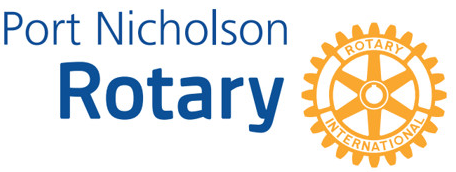
"Deploying drugs for new purposes holds great purpose. The scale of the opportunity for 'drug repurposing' is vast" - The Economist 2/3/19
"If you drain all the water from the Pacific Ocean, you'll realise all the lands are connected"
Dr Swee Tan spoke to the club on 2 November about The Gillies McIndoe Research Institute's ground-breaking research relating to strawberry birthmark, and the potentially enormous implications for the treatment of other tumours, including cancer.
You can support The GMRI's work by clicking here
Brenda Lazelle reports.
Dr Swee Tan is the Founder and Executive Director of the Gillies McIndoe Research Institute (GMRI), which opened in 2013. It is a translational research Institute, where everything they do is intended for direct application. As a non-profit NGO, most of their funding is from donations.

The GMRI aspires to create step change in the treatment of cancer, vascular birthmarks and fibrotic conditions. They hope to achieve this by looking at and using knowledge of the role of raw stem cells to solve problems.
As a plastic surgeon Dr Tan sees the range of birthmarks children are born with. These are often disfiguring and impact immensely on the individuals. Work began 26 years ago trying to discover what causes strawberry birthmarks and their research led them to the discovery of the link between birthmarks and stem cells.
Picking up on his theme of old weapons for new battles, they found that beta blockers, commonly used for high blood pressure, were effective in treating strawberry birthmarks. This repurposing of drugs currently in use – and off patent – costs a fraction of a new drug development budget. And it is much quicker to get to market because it already is approved for use in humans. Publication of the Institute’s success in the treatment of strawberry
birthmarks attracted the attention of the international research community, encouraging them and the sector to consider paradigm shifts like this one.
But what has a strawberry birthmark got to do with cancer? The GMRI apply their knowledge of stem cell links to cancer stem cell concepts. Within a cancer there are cancer cells and cancer stems cells. Dr Tan used a neat analogy of cancer as a beehive and specifically, the role of the queen bee in the hive. The queen bee can create exact copies of herself – and as in a tumor, cancer stem cells can replicate themselves. These stem cells resist conventional treatment so going after the queen bee is the focus - blocking the different paths of the stem cell growth.
The Team’s initial target is glioblastoma – an aggressive brain tumor. They have already undertaken a phase one trial of a possible treatment which has shown promising results and are currently fundraising for their phase two trial. While they have approval to proceed, they need to raise the $3.6million required. Dr Tan believes that if this trial is successful it will lead to applying their knowledge to other cancer types. This is yet another example of
exciting research being undertaken here in Aotearoa. You might like to watch the video on gmri.org.nz
